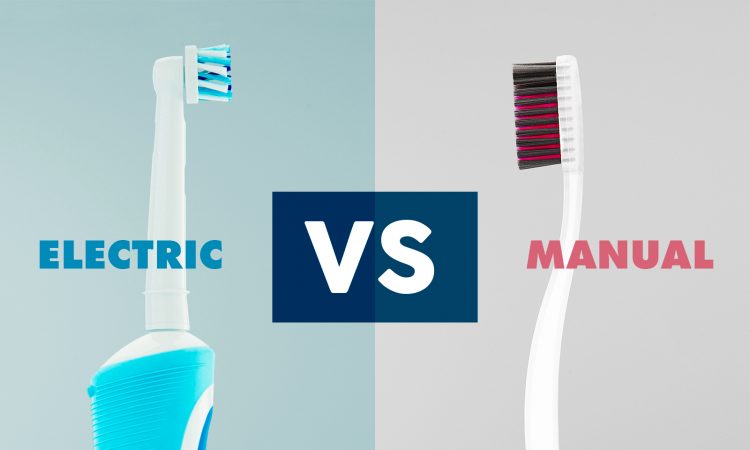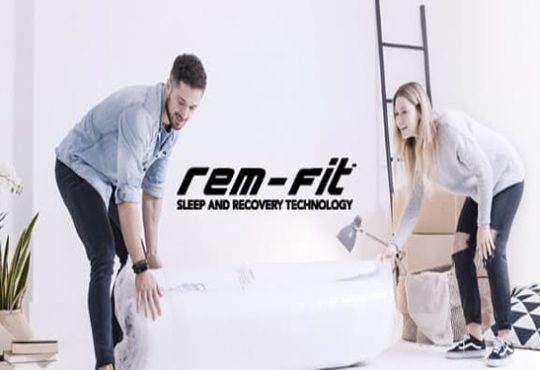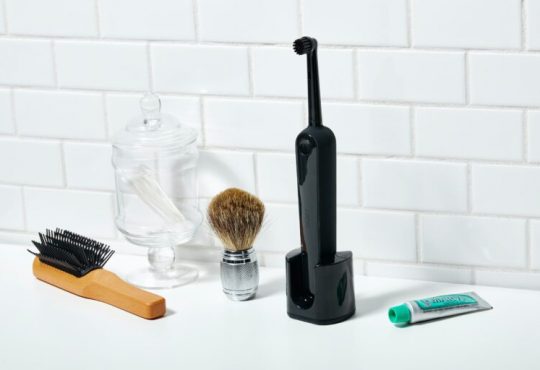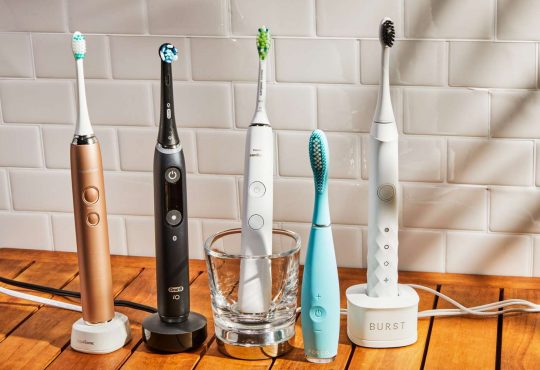
There are a number of pros and cons to using either manual or Electric Toothbrushes. It can be difficult to know which is best for you. Below are some points to consider.
Teeth Clean & Healthy
Brushing twice a day is important for keeping your teeth clean and healthy. Food particles and bacteria that cling to your teeth throughout the day can contribute to tooth decay and gum disease. This article will outline how to brush your teeth properly.
Breath Fresh & Prevents
Brushing your teeth will help remove plaque, food particles, and pigments from your teeth by Izzo Promotional Code. It also keeps your breath fresh and prevents tooth decay.
Type of Toothbrush
Using the right type of toothbrush can make a huge difference in your oral health. You should invest in a soft-bristled brush that fits your mouth. Also, make sure you choose the ADA-accepted fluoride toothpaste.
Electric toothbrushes are a good alternative to manual toothbrushes. They have a smaller bristle head and move at a faster pace than manual brushes. However, they do not have the ability to reach deep between teeth. Some models are rechargeable.
Systematic Brushing Routine
When it comes to brushing the right way, a manual toothbrush and electric toothbrush are both capable of delivering the desired results. The difference is that a manual toothbrush requires a bit of practice. An electric toothbrush will have a timer that helps you to follow a systematic brushing routine.
An electric toothbrush can also be an effective option for people with weak hands or arthritis. Since the bristles move at a fast rate, it makes it easier to brush hard to reach areas. Aside from the obvious benefits, an electric toothbrush is safe for your gums.
Good Way to Neutralize Acidic Foods
In addition to brushing, rinsing with water can be a good way to neutralize acidic foods. A mouth rinse can also be beneficial for some people. Most mouth rinses are designed to cover odors, but some people also find them useful to keep their mouths healthy.
While there are advantages to brushing with an electric toothbrush, a manual brush can be used by most people. In fact, many dentists recommend using both types of brushes.
Oral Health
For optimal oral health, it is recommended to brush your teeth for at least two minutes each time. Brushing your teeth for only a few seconds can harm your gums, so it is a good idea to brush at least twice a day.
Dental Plaque
Dental plaque is a collection of bacteria that forms on the teeth. Its presence can lead to periodontal disease and chronic bad breath. To prevent this, it is essential to brush your teeth daily.
Two Types of Toothbrushes
Several studies have looked at the effectiveness of manual and electric toothbrushes for removing plaque. While most of these trials did not show a significant difference between the two types of toothbrushes, some did. In some cases, the results showed that a rotary electric brush was more effective than a manual one.
Larger Brush Surface
Some studies found that people with disabilities were able to use an electric brush more effectively than a manual one. They could also use a larger brush surface.
A randomized trial evaluated the efficacy of 11 different toothbrush designs on bacterial plaque removal. The study did not find significant differences in the bacterial plaque removed from the teeth of subjects using each of the toothbrushes.
Another study was conducted to determine the effect of a U-shaped automatic electric toothbrush on removing plaque. Subjects used the toothbrush twice a day for three weeks. After one week, they returned to the dentist for plaque assessment.
Power Electric Toothbrush
In another study, a Jordan Power electric toothbrush was compared to two commonly used manual toothbrushes. O’Leary plaque indices and the Marginal Plaque Index were used for assessment of plaque.
A study was also conducted to evaluate the efficacy of a new battery-powered toothbrush on removing supragingival plaque. Twenty-six adults were used as study participants. They were asked to brush their teeth with the electric toothbrush for three minutes twice a day. Their teeth were photographed and the amount of plaque was measured at 15, 30 and 60 seconds.
Conventional Powered Toothbrush
A new UAET with silicone bristles has become popular in recent years. The new brush has simultaneous action on both arches. Interestingly, the amount of plaque that was removed by the brush was significantly lower than that of the conventional powered toothbrush.
Many people believe that an electric toothbrush is more effective at removing plaque than a manual one. However, some clinical trials have shown that they do not.
Regardless of which type of brush is best for you, brushing your teeth daily is the only way to prevent gum and tooth problems. You should avoid bleeding gums when brushing, floss daily, and visit your dentist if you have any other dental concerns.
If you’re looking for a new toothbrush, you may be wondering if you should choose a manual or an electric one. Both are effective at cleaning your teeth, but they have different features and advantages.
Tried-&-True Dental Hygiene Staple
A manual toothbrush is a tried-and-true dental hygiene staple. These are easy to use and store. They are also inexpensive. Most models are available for under $5 and can be found at your local supermarket or drugstore.
On the other hand, an electric toothbrush is significantly more expensive. An average brush head costs between $5 and $30, depending on the brand. You also need to keep in mind that you will need to replace your head every few months.
Features & Benefits
Electric toothbrushes have more features and benefits. Most of them have built-in timers and pulsing movements that make it easier to clean your teeth. Some even have pressure sensors that warn you if you are over-brushing.
Although there are many benefits to using an electric toothbrush, some people still prefer a manual version. This is especially true if you travel. Unlike an electric toothbrush, a manual version is portable and can be taken anywhere.
Lastly, a manual toothbrush is eco-friendly. It uses less plastic than an electric toothbrush. There are even reusable toothbrush handles. The handles can be made of metal, bamboo, or plastic.
Plant-Based Plastics
However, you should take into account the materials used in the manufacturing process. Some manufacturers are making toothbrushes from plant-based plastics.
Most Environmentally-Friendly Option
While the cost of a manual toothbrush is much lower than that of an electric one, it is not necessarily the most environmentally-friendly option. The plastic bristles in a standard toothbrush are difficult to recycle, and they generally end up at landfill sites.
On the other hand, a manual toothbrush is a great choice for people who travel frequently or have kids. They are easy to pack and are affordable.
Choosing the best toothbrush for you can be a daunting task. Most dentists agree that you should brush your teeth twice a day. Whether you opt for a manual or an electric toothbrush, the best way to avoid cavities and gum disease is to brush properly and regularly.
Mouth Full of Decay-Causing Plaque
A lot of people with disabilities and limited mobility find it difficult to brush their teeth properly. When this happens, they may end up with a mouth full of decay-causing plaque that isn’t being cleaned effectively. One of the best ways to solve this problem is to switch to a toothbrush that’s easy to use. Electric and manual toothbrushes are both effective for brushing your teeth and can be helpful to people with limited mobility.
Brush Head’s Speed
Electric toothbrushes are convenient to use, especially if you need to do this frequently. Many of them have built-in timers to help you keep track of how long you’ve been brushing. This helps you avoid the mistake of rushing and removing too much plaque. Some also have features that encourage you to brush longer, such as music that plays when it’s time to stop brushing. You can also purchase an electric brush that allows you to customize the brush head’s speed, motion, and even vibrate for a more stimulating experience.
Manual toothbrushes aren’t ideal for those with limited mobility, however. They require you to brush in circular motions and aren’t designed to be used by people with physical challenges. It’s not uncommon to see people with disabilities and limited mobility unable to effectively use a manual toothbrush. While they are effective at removing plaque, they require more effort than electric brushes.
Final Words:
Lastly, electric toothbrushes are usually easier for children to use. This is because they are usually designed to have a more fun design. For instance, some electric toothbrushes have fun features like music that play when it’s time to stop brushing. In addition, some electric toothbrushes have built-in timers that alert users when two minutes have passed.
These are just a few reasons why electric and manual toothbrushes can be so helpful for people with disabilities and limited mobility. In addition to ensuring that you are keeping your mouth clean, both types of toothbrushes can be very useful in preventing gum disease and tooth decay.








